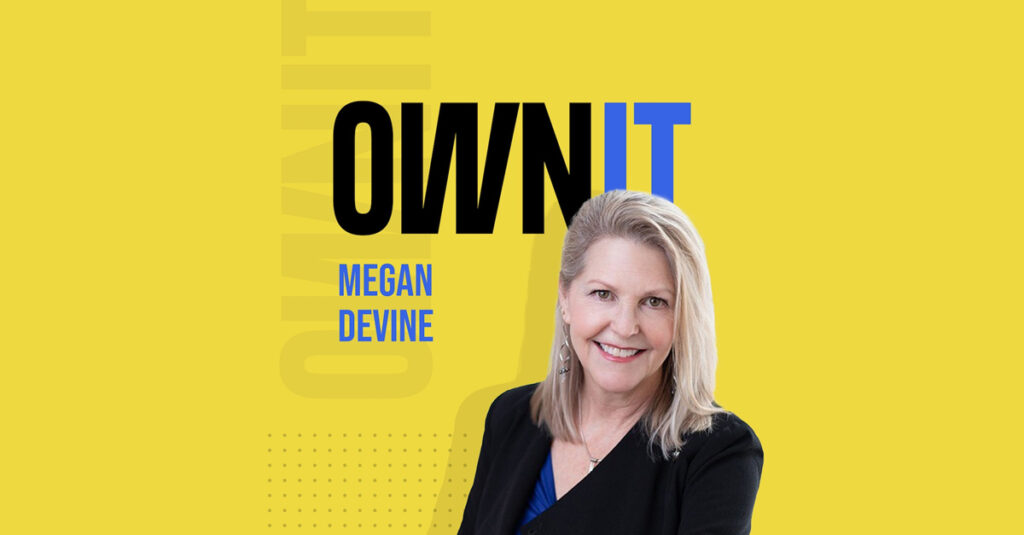Curious about how marketing has changed in the eyes of B2B marketers, we commissioned a study with the research pros at Audience Audit at the end of 2022. We set out to understand the perceptions, beliefs, challenges, feelings, and priorities of B2B marketers and salespeople, and test a few theories of our own.
The survey explored how marketers use data insights to inform creative, how they perceive the role of emotions in buying decisions, their thoughts on differentiation, and more.
Let’s get into it

Segments
Our respondents fell statistically into four segments connected by common attitudes. As a B2B marketer you’ll probably recognize yourself in one of these descriptions.
Believers are resourceful marketers who embrace customer data and use it to inform marketing initiatives. They use the most marketing tools and channels available and say B2B organizations should use real data about what their customers want and need to connect with prospects.
Controllers say their organization excels in all things sales and marketing. They say they’re great at relationship building, they’re clear on the problems they solve for their customers, they differentiate well from their competitors, and they create useful, engaging content. But they’re not terribly tech savvy.
Nurturers are salespeople at heart, are great at building relationships with customers and believe in face-to-face interactions. They feel their marketing should focus on the needs and emotions of customers, and that appealing to prospects is best done by differentiating themselves from other companies.
Skeptics aren’t completely convinced that marketing is valuable, yet they have good sized marketing budgets. Transactional in their views, they say marketing is only useful for promoting a new product or other one-time event. Some think knowing their buyer’s basic demographic profile is enough and that buyers only care about price. They are also the most tech enabled of the segments.

Creative & differentiation
More than 71% of respondents said that creative (branding, design, and messaging) is very important in the effectiveness of their marketing efforts. They see it as a useful tool for standing out in a crowded market.
This is not surprising. We’ve seen B2B marketers working hard to up their branding game because they see it as foundational to getting a better return on investment (ROI) from their marketing programs.
But this is surprising:
More than half (62%) of the responders think customer service sets them apart from their competitors.
There may have been a time when that was true—but those days are gone. B2B buyers are savvier than ever and expect good customer service. Plus, when everyone claims to provide the best service, it ceases to become a differentiator.
To truly make an impact with your marketing, you need to go deeper by developing creative assets with audience insights in mind. We call this approach Intelligent Creative. It takes your company’s first party data, enhances it with AI technology that identifies audience values and motivators so marketers can understand buying behaviors. These insights then go into developing creative assets to appeal to your buyer’s emotions.
The content you create also serves as a major differentiator. Offer it in a variety of formats, like blogs, videos, Q&As, comparison charts, tips sheets—whatever you think works best for the subject at hand. Focus on the problems you solve for your customers and how your products and services make their lives better. Show them how their work can be done more efficiently, that they’ll be seen as an expert by their peers, or that their boss will be impressed by the money they saved. It should always tell them what they need to hear, which isn’t always the same as what you want to tell them. The trick is to use the word “you” more than you use the word “we”.
Another strategy for standing out among your rivals is to actually do something different. Start by researching your competitors’ business strategies. And then brainstorm ideas with your team about things you can do differently. Develop a loyalty program, offer virtual classes, or start an online community where buyers can connect with each other and talk shop. Look for what’s missing in your industry and be the first to offer it up.
Additionally, most B2B buyers aren’t solely considering price in their buying decisions. Just like B2C buyers, many other factors come into play. They want to do business with companies that understand them and want to help them reach their professional and personal goals. Often, they learn about prospective vendors by doing online research before they even think about pricing.

Brand positioning
Almost two thirds of respondents say they use marketing strategy and research to develop their brand positioning. And about half say better customer service is a benefit of having a solid brand position.
Bravo to those of you who are seeing the positive effects that come from the hard work of developing positioning statements and tailored messaging. It’s your foundation for building and presenting a unique brand in your industry, and it helps you both internally and externally. Not only does it attract your ideal audience, it also keeps your team aligned under one common voice. It’s a win-win for everyone.

ROI
Social media wins in the highest-ROI category with respondents. Over half say it yields a higher return than any other initiative. Market research and email marketing are also high on the list of best ROI tactics.
This makes sense since social media is less expensive and more personal than most other tactics. But it still requires resources to plan, develop, execute, and track results. Yet another reason to ensure your content is relevant, useful, and engaging.
Pro tip: Generative AI is great for turning long-form content into easily digestible social media posts. If you haven’t tried it yet, head on over to openai.com for free access to ChatGPT.

Data
Respondents tell us they value differentiation, do research, and gather data. And earlier in the survey they said they believe creative has a major impact on their marketing success. But they may not be using all that data to power up their creative.
This one has us wondering, why not? Marketers have more access to technology and tools than ever before. Now is the time to use the data you’ve been collecting to understand the people who buy from you. Insights from data will help pinpoint important information about your audience to help you communicate your value in a relevant way. Data collection will continue to be a critical part of marketing strategy. At the very least, every B2B website should be collecting privacy-safe, first-party data right now so it can be used later for more targeted marketing.

Technology
Only about a quarter of our respondents are using marketing automation, data analytics software, and SEO tools.
We know resources can be tight in B2B marketing departments and the people needed to manage these systems may be limited. But the benefits gained can make your marketing more effective and efficient. If internal resources aren’t available, many agencies like ours can do the heavy lifting for a fraction of the cost of hiring a new employee.

Distributors
Many of our respondents sell products through distributors or dealers, and they say their biggest challenges are maintaining relationships and connecting with decision makers.
Distributor/dealer relationships have always been tricky in the B2B world. Now, it’s even more complicated due to differing communication preferences. Older buyers may still prefer one-on-one relationships with salespeople and younger buyers will likely prefer to do their own research before talking to someone.
We recommend getting to know your audience and identifying personas before developing a marketing strategy for these important relationships. Conduct a survey, tap into data from trade associations, meet regularly with the distributors you currently work with to discuss their biggest challenges and use that info to create useful content for them and their end users—always keeping the goals of both audiences in mind.

Sustainability
Over half of respondents say sustainability is a core feature of their brand.
This is great news, but we’re not seeing many of them leading with it, yet. And we’re not sure why. Buyers want to see companies lead with authenticity and align with values they care about. B2B businesses have the opportunity to take the lead on changing the narrative. This is your chance to take an authentic stand on your values. And to differentiate from your competitors.
This is just the tip of the research iceberg—there’s much more to take in when you’re ready. Head over here for the complete Executive Summary, videos discussing key findings, and access to the full dataset. And be sure to connect with our CEO and follow us on LinkedIn for more bits and bites about this research. And lots of other stuff too.
![cat[&]tonic](https://cat-tonic.com/wp-content/uploads/candt_logo-rw.png)




